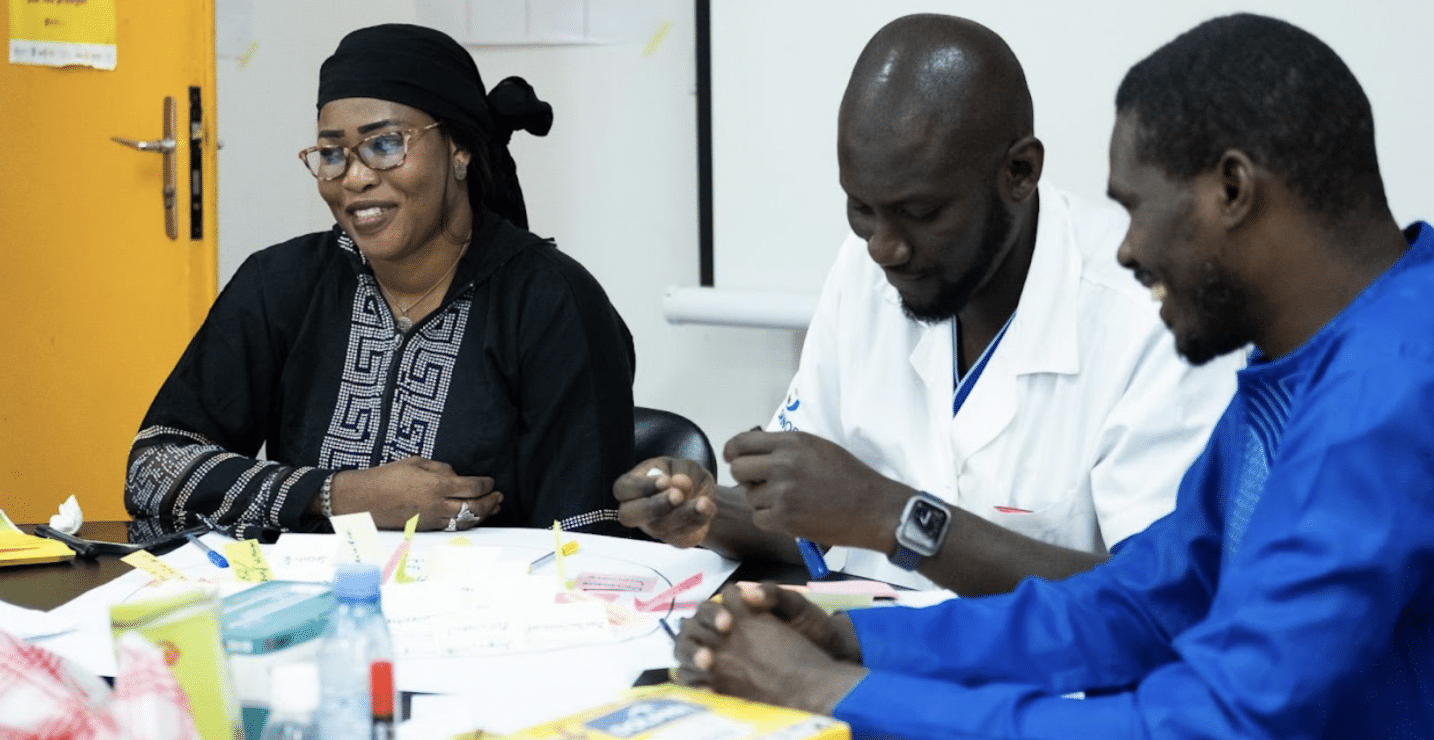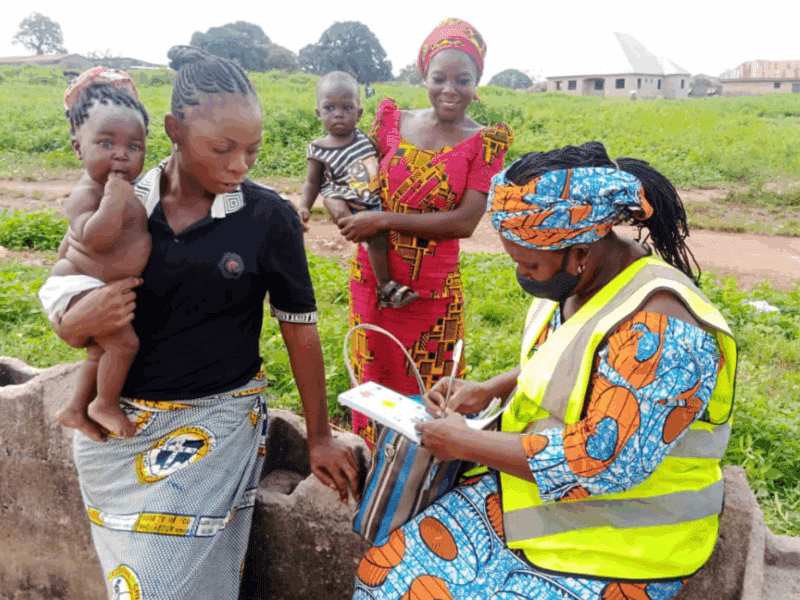By working closely with those most affected by maternal health challenges and designing interventions based on their real-world experiences, the Johns Hopkins Center for Communication Programs has created a successful model for developing customized solutions based on the specific needs of communities around the world.
As part of the MOMENTUM Safe Surgery in Family Planning and Obstetrics project led by EngenderHealth, which ended ahead of schedule this spring after dramatic funding cuts to USAID, CCP used a human-centered design (HCD) approach in four countries to create country-specific and locally led social behavior change solutions to improve access to high-quality knowledge and surgical care in maternal, newborn, and child health, family planning, and reproductive health.
The challenges faced in each country, even within countries, are not the same, so a one-size-fits-all approach isn’t appropriate. But, by engaging with and learning from health providers, clients, partner organizations and government representatives in each location, CCP was able to facilitate a process to identify context-specific challenges and find the most appropriate solutions.
“Human-centered design was a powerful and innovative choice for MOMENTUM Safe Surgery because the approach centers the voices of those most impacted – patients, providers, families, and communities,” says Uttara Bharath Kumar, who led CCP’s work on the project. “By grounding the design process in empathy and real-world insights, HCD enabled the project to surface context-specific solutions that resonate deeply with local needs.”
In Nigeria, for example, health providers rarely counsel their clients on the harms of female genital mutilation/cutting (FGM/C), due to limited awareness of laws that prohibit this practice and prevailing cultural norms where FGM/C is a longstanding tradition. Through HCD conducted in Ebonyi State, stakeholders suggested improving client education and provider training about FGM/C policies, including discussion of the dangers and legal implications of FGM/C.
“When the stakeholders most connected to the challenge are identified and engaged as true partners in research and design,” says Danielle Piccinini Black, who leads HCD initiatives at CCP, “solutions are not only more relevant, they’re also put on a fast track to succeed.”
Piccinini Black says that one key to the success of the HCD approach utilized during this project was the extensive HCD training conducted with each country team prior to the start of the work so they understood what the process entailed. Another, she says, was that each team conducted an analysis to determine which behavioral insights and challenges would become the basis for the HCD activities themselves and conducted comprehensive stakeholder analyses to ensure the right people were engaged in the work.
“Oftentimes in human-centered design, the challenge is either predetermined or defined quickly, with minimal research to support it,” she says. “What made this approach unique was the extensive upfront landscaping to deeply understand the issues at play and identify the stakeholders most connected to them. That foundation allowed for a more focused, relevant, and customized design process.”
In India, where CCP worked closely with the Center for Communication and Change-India (CCC-I), the HCD approach focused on emergency obstetric care. Among the solutions developed there was the creation of videos and print counseling materials to help guide pregnant women, with intentional inclusion of male partners and family members, through the process of how and why an emergency Caesarean section might be recommended in certain births.
In Senegal, long wait times, inadequate empathy for women upon arrival at the health facilities, and exclusion of community-based health workers that the patient are more familiar with and trust delay and hinder effective care. The HCD approach focused on improving the quality and timeliness of facility-based deliveries to avoid fistulas (birth canal holes created during prolonged and obstructed labor that leave women incontinent) and other obstetric trauma.
Some of the ideas developed in Senegal revolved around working with men to improve their knowledge of safe delivery to build trust, preparedness, and stronger links between communities and health facilities. Another one suggested the creation of an emergency blood bank as a way to improve emergency surgical care and build trust between the community and the health centers.
In Mali, poor road conditions and lack of trained staff for emergency referrals delay maternal care and increase risks. Among the ideas developed by the groups there included the use of flipbooks to raise client awareness of the importance of pre- and postnatal care, understanding of danger signs in pregnancy and obstetric fistula prevention and care. They also wanted to create WhatsApp groups to improve the referral and transportation process.
Despite the end of the Safe Surgery project funding, many of the solutions generated were implemented, even though they still need to be more widely tested. But Piccinini Black says that being given the time and space to conduct thorough, intentional training prior to the HCD workshops means that participants from the four countries now feel better equipped to do their own HCD work going forward.
“We heard overwhelmingly positive feedback from team members,” she says. “It was refreshing to have the time and space to really dive in and understand what human-centered design actually is, along with its best practices. The training wasn’t just theoretical. It equipped everyone with practical skills they can carry forward into future work.”





